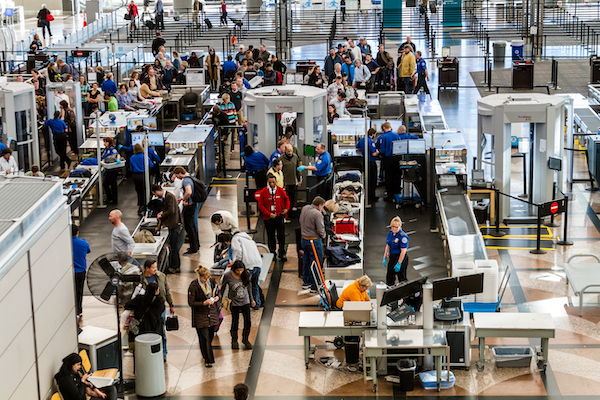Going through airport security is not something that anyone enjoys. The long lines and anxiety over a potentially misplaced bottle of water are enough to make many people dread flying.
But that frustration should not undercut our appreciation for the advanced technology behind airport security. Namely, airports’ effective use of highly advanced lenses in their X-ray devices and ID scanners should not go unnoticed. Let’s take a closer look at some of the scanner lenses that can be found when going through airport security.
Airport Security Scanners
X-Ray Detection
Before anyone can board their plane, their luggage must first be checked using an X-ray scanner. If you’ve ever flown before, you’re likely familiar with the procedure behind this. But are you aware of the optical science at work?
X-rays are a type of electromagnetic wave with a wavelength too small to be perceptible to the human eye. However, an X-ray’s wavelength is visible to certain types of lenses. Different materials absorb X-rays at different rates. This enables airport scanners to detect and determine the contents of your luggage in an instant.
As your luggage passes through the X-ray scanner, X-rays are passed through the bag (though some materials in your bag can block or absorb the X-rays, preventing them from being visible to the scanner). Using this data, the scanner’s lens is able to construct an image of the contents of your luggage. Low-energy x-rays, caused by dense materials, appear darker on the scanners than on low-density materials. This allows airport security officials to quickly assess the contents of your luggage and, hopefully, pass you through the checkpoint without delay.
A similar X-ray scanner technology is used for full-body X-ray scans. Of course, in these scanners, the X-rays must first pass through additional materials so that they have much lower energy. This is a much safer version of X-ray technology, more suitable for use on people.
ID Scanners
The other important lens type used in airport security can be found in ID scanners. ID scanner machines are highly complex devices that start with a simple image scan.
Airport ID scanners start by making a highly detailed, highly precise optical rendering of your ID or passport. These imaging lenses have a focal length between 8-112 mm. This means that they offer a very wide angle of vision. This makes them well-suited for accurate imaging of your entire identification document.
Following the image scanning, ID scanners must also be able to read the barcode and other printed data on the document. This is another complex process made simple by the application of lasers, lenses, and stored data.
Once the image and barcode have been scanned, the ID scanner machine must authenticate it. This process involves several high-level security checks which are, again, conducted automatically, and within seconds. Once approved, you are cleared to pass through to the next checkpoint.
The entire process of passing an ID through an ID scanner may only take a matter of seconds. But, as you can see, it is a highly intricate process based on years of advancement in optical and computer science.
And once you’ve gone beyond airport security, there is an even wider array of aviation lenses in use onboard your airplane. To learn more about the science behind optics and lenses, be sure to follow Universe Optics for future updates.
